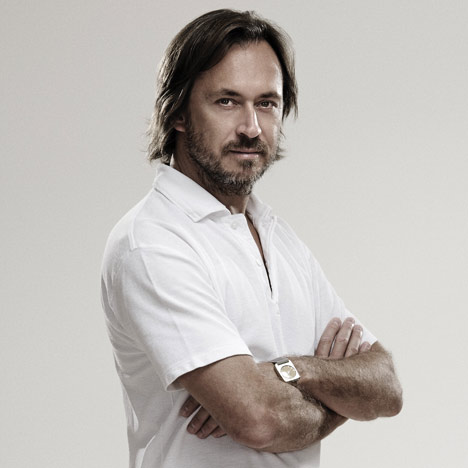
The design industry is "really pathetic" says Marc Newson
News: the fashion world "laughs at" industrial designers while Google Glass makes the wearer look like "a bit of an idiot", according to designer Marc Newson (+ interview).
"Frankly speaking, the design industry is really pathetic in terms of how it approaches manufacturing and how it brings things to market," Newson told Dezeen in an exclusive interview yesterday.
"I'm not talking about Apple, I'm talking about furniture designers and what happens during the Milan fair," he said. "If they took note of the way that the fashion world brings things to market, with such extraordinary efficiency, they could learn an enormous amount."
The Australian designer was speaking to Dezeen at the launch of his new eyewear range for glasses manufacturer Safilo, which debuts in Milan next month.
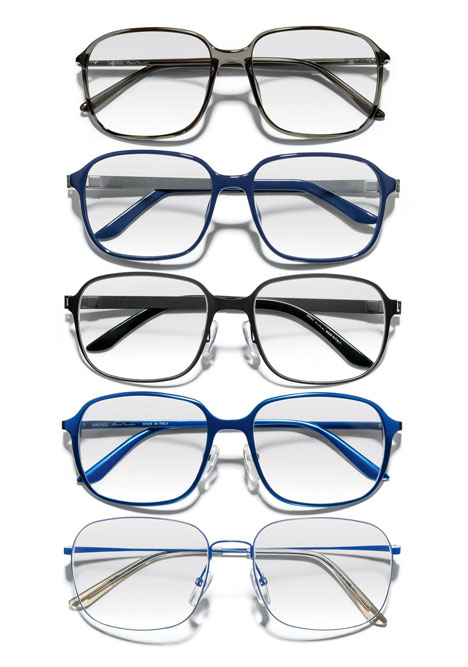
The range is his first foray into optical eyewear, which he says is the perfect demonstration of how fashion and design can work together.
"It is, in essence a perfect piece of industrial design, but at the same time it can't help but be a piece of fashion," said Newson.
"I'm not embarrassed or reluctant that it be perceived as a fashionable item because at the end of the day I’m a consumer. I’ve got to go out and feel happy about putting my hand in my pocket and spending money on this stuff. I don’t want to look like an idiot."
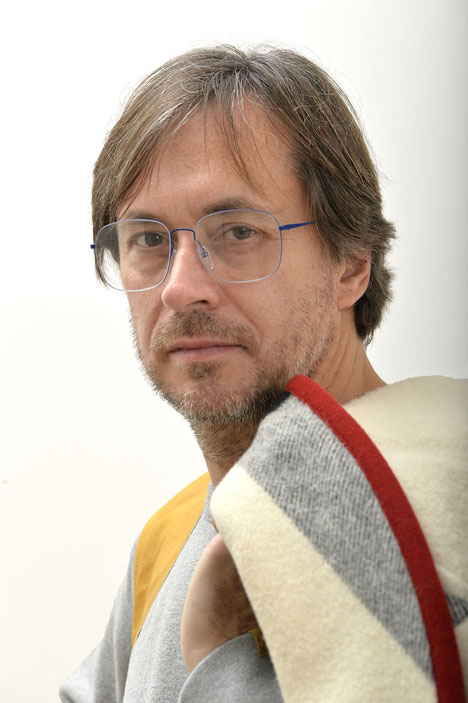
The two worlds will come together with the development of wearable technologies, which Newson feels are "certainly the future". But he is not a fan of the design of Google Glass, which he says makes the wearer look like "a bit of an idiot".
"What Google have done thus far, I wouldn’t be seen dead wearing. It really looks pretty stupid," he said. "It's a little bit like that wonderful invention called the Segway. It’s such a fantastic piece of technology but you just look like a complete dick when you drive around on it.
"That's precisely the moment when I think the fashion world laughs at the world of industrial design, justifiably."
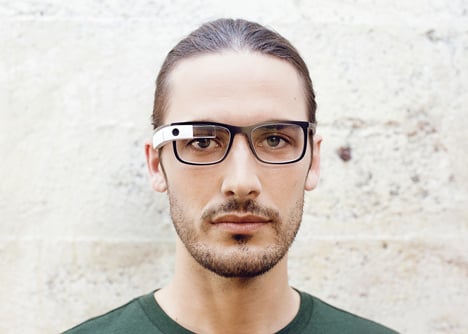
Despite this, the fashion industry could also learn a lot from industrial designers in terms of material technology and the application of techniques and processes according to Newson. He has previously turned his hand to fashion and accessory design with companies including G-Star RAW, Nike and various luxury watch brands.
"There's an enormous territory that they both share, that they should both embrace, but there is this real trepidation on both sides to broach that ground," he said.
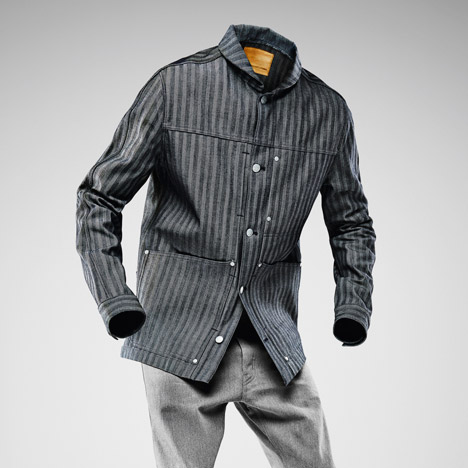
Here is the edited transcript of the interview with Marc Newson and Dezeen editor-in-chief Marcus Fairs:
Marcus Fairs: Tell us about the project you've done with Safilo.
Marc Newson: I've just launched a range. Basically the collection revolves around one central design, one central look and I’ve chosen to take that design and really extrapolate that through a variety of techniques.
So for example, one set of frames is machined out of solid aluminium, another set of frames is made of a material called Optyl which is a proprietary type of synthetic plastic that Safilo use. Another frame is made of stainless steel sheets, very thin, pressed into the shape with a live hinge in the steel.
There’s another pair which are manufactured using a technique called UFO, which is a proprietary Safilo invention that dates back to the late 1960s. Safilo were the first company to make this kind of invisible frame and everyone does that now but this was done in the 1960s. It was basically a piece of spring steel wire which is wrapped around the lens, so we've reintroduced this old technique which Safilo invented.
Safilo is the largest manufacturer of optical eyewear in the world I believe, and they have a really rich history of manufacturing optical frames. And a very old company. And it’s also the 80th anniversary this year.
Marcus Fairs: I don't really know Safilo as well as certain other eyewear brands, so is that part of the reason why they approached you?
Marc Newson: You'd know all of the brands that Safilo manufacture. Just about every major fashion brand's eyewear is licensed.
Safilo started as its own manufacturer of eyewear. Primarily optical frames rather than sunglasses, but I think they now manufacture sunglasses for all the major fashion brands as well. Optical frames are really the core of the brand, it's the heart of the business and it's what the business started doing.
Everyone knows who Safilo is if you’re in the industry. It's one of those names that's synonymous with it.
Marcus Fairs: You've really pioneered in lots of territories that other designers have followed you into, like watches and clothing. So why have you held back on eyewear?
Marc Newson: Well, I'd never been approached and frankly it really wasn't until I had to start wearing eyewear that I understood what an extraordinary necessity it is.
I hit fifty and a couple of years ago I started having to wear reading glasses. These are rapidly becoming an expensive part of my life, far more so than a watch. But in many ways it's a really interesting object, a pair of glasses, because it straddles the borderline between fashion and industrial design. It treads a very fine line between the two.
Optical frames of course have a slightly more functional angle because you absolutely have to wear them, but more interestingly for me as a designer, they're like a tool. I think it's safe to say that men like tools in general but, as a designer, I'm particularly obsessed with tools and I'm obsessed with really good quality tools. It's not until you’re really faced with the black and white necessity of having to use these things. These are not the black pair of sunglasses, these are not just fashion accessories that you just have to wear when the sun's out. I really need these things to read.
Marcus Fairs: I know it's boring to talk about the difference between the fashion world and the design world, but the crossover very rarely works. You've designed for G-Star RAW and some of those pieces have become really collectible but, in general, designers doing fashion doesn't work. Do you think the idea of the tool is really key to that? That designers like designing useful things?
Marc Newson: I think there's an enormous amount of prejudice on both sides really. I don't think that fashion designers think industrial designers are very good at designing fashion and I don’t think that on the other hand a lot of industrial designers – or architects for that matter – think that fashion's a particularly serious industry. I feel really sincerely that in order to be a good designer, we need to embrace all of these sorts of industries.
The world of industrial design has an enormous amount to learn from the fashion industry, in terms of how they do things. Frankly speaking, the design industry is really pathetic in terms of how it approaches manufacturing and how it brings things to market. I’m not talking about Apple, I'm talking about furniture design and what happens during the Milan fair. If they took note of the way that the fashion world works, the way fashion world brings things to market, with such extraordinary efficiency, they could learn an enormous amount.
On the other hand, I think that the fashion world could learn a lot from the world of industrial design in terms of material technology, in terms of certain techniques, in terms of certain processes. I do feel there's an enormous territory that they both share, that they should both embrace, but I agree that there is this real trepidation on both sides to broach that ground.
Marcus Fairs: Is this something that you're actively pursuing or have an answer to?
Marc Newson: I don't know if I have an answer necessarily apart from the fact that this is a perfect example. This eyewear is a perfect example of something that crosses, that is necessarily between those two places. It is, in essence, a perfect piece of industrial design, but at the same time it can't help but be a piece of fashion. Eyewear is fashion, whether you like it or not. And I want it to be fashion, I’m not embarrassed or reluctant that it be perceived as a fashionable item because at the end of the day I'm a consumer. I’ve got to go out and feel happy about putting my hand in my pocket and spending money on this stuff. I don’t want to look like an idiot.
Marcus Fairs: Finally, Google announced earlier this week that they're doing a deal with eyewear companies to put Glass into fashion accessories. They've already done their own in-house stuff. Is that something that you're interested in?
Marc Newson: Wearable technology is certainly the future, there's no question about that. Whether or not it's appropriate to put it in a pair of glasses, I'm not sure. There's a real risk that you look like a bit of an idiot. What Google have done thus far, I wouldn't be seen dead wearing. I think it really looks pretty stupid.
It's a little bit like that wonderful invention called the Segway. It's such a fantastic piece of technology but you just look like a complete dick when you drive around on it.
So that's where the bridge to the world of fashion really doesn't, or didn't, work. That's precisely the moment when I think the fashion world laughs at the world of industrial design, justifiably.